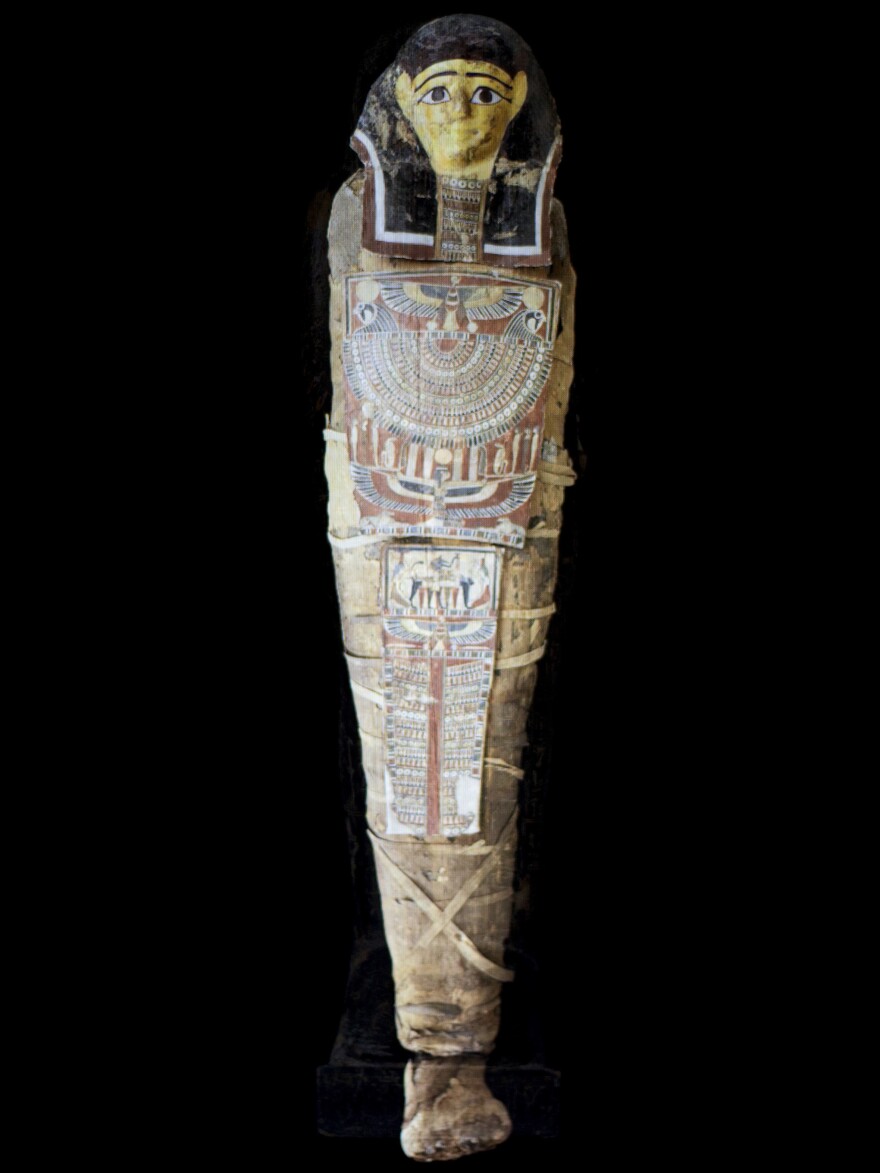The 2,200-year-old mummy of an Egyptian man who spent a lot of time sitting and eating carbs went on display at the Israel Museum in Jerusalem on Tuesday and will be open to the public beginning Wednesday.
Alex, as he is called by the researchers who study him, was a 5-foot-6-inch Egyptian priest who spent most of his time sitting, according to his osteoporosis-weakened skeleton, which has shrunk to just over 5 feet over the more than two millennia he spent embalmed, according to The Times of Israel.

The Times reports:
"A century before [Antony] and Cleopatra, when the Ptolemies ruled the Nile, he [Alex] lived as a priest in the city of Panopolis, modern-day Akhmim, in Upper Egypt.
"During his lifetime Alex was known as Iret-hor-iru — The Protective Eye of Horus — but got his modern moniker after he was donated to Jerusalem's Pontifical Biblical Institute by Jesuits in Alexandria."
Alex died in the second century B.C. He was between 30 and 40 years old, according to radiocarbon dating of the linen in which his body was wrapped.

"Osteoporosis is a disease that is characteristic of the 20th century, when people don't work so hard. We are glued to screens," Galit Bennett, who curated the mummy exhibit, told the Associated Press. "We were very surprised that there were people who didn't do physical work and that it affected their bodies like this man here."
Bennett also told the wire service a CT scan of the mummy shows signs of tooth decay, cardiovascular disease and lack of exposure to the sun. The thorough Egyptian embalming techniques and dry climate in Jerusalem preserved not only the man's bones, but remnants of blood vessels, skin and teeth.
Alex is not alone in his afflictions. Nearly half of 44 mummies from a 2011 study of ancient Egyptian men and women preserved as mummies showed signs of clogged arteries. And it wasn't just Egypt: a 2013 study of 137 mummies from around the world found about a third probably had cardiovascular disease.
As for why ancient people suffered from diseases we associate with modern lifestyles and diets, the authors of both studies choose not to speculate, but the 2013 paper notes in its conclusions, "Although commonly assumed to be a modern disease, the presence of atherosclerosis in pre-modern human beings raises the possibility of a more basic predisposition to the disease."
Copyright 2020 NPR. To see more, visit https://www.npr.org. 9(MDAwMTM1NDgzMDEyMzg2MDcwMzJjODJiYQ004))



